Are you a Quiet Speculation member?
If not, now is a perfect time to join up! Our powerful tools, breaking-news analysis, and exclusive Discord channel will make sure you stay up to date and ahead of the curve.
Modern Magic’s history under the lights has been… complicated. As a format, it was born into fire in 2011 with Pro Tour Philadelphia, and since then, the format has bounced from darling to redheaded stepchild to orphan and back, faster than strobe lights at a Skrillex show. Bannings, Pro Tours, more bannings (as a result of Pro Tours) and droughts of high-profile events have plagued the format for six years and counting, but through it all, Modern has thrived. The prevailing wisdom regarding Magic Organized Play (consistency, interactivity, and reliability), has not necessarily applied to Modern, cementing its status as an enigma in the minds of players and R&D alike. We stand today on the precipice, as Wizards of the Coast descends once more into the fray. Modern Magic will return to the Pro Tour on February 2, 2018. Bilbao is the setting. What will be the story?
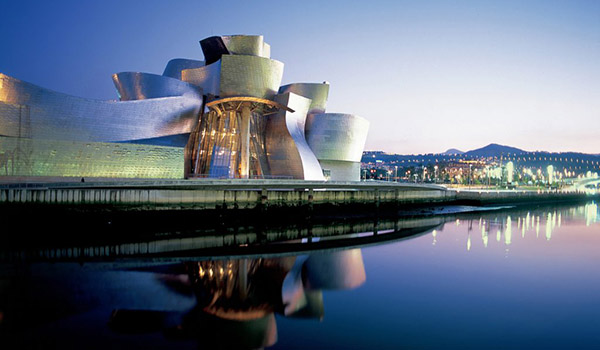
Today, we will be diving into the Organized Play announcement, detailing the changes that are coming to Modern, and discussing what the potential effects of these changes to our format can be. We’ve got a lot to get through, so let’s get started.
Part 1: The Bilbao Effect
It’s curious, or perhaps fortuitous, that the first Modern Pro Tour in two years would be held in Bilbao. If you haven’t heard of Bilbao before, don’t worry. It’s only the tenth largest city in Spain, and relatively unimpressive compared to the likes of Madrid, Seville, Granada, Valencia, and Barcelona (of course). In the 80’s, Bilbao was plagued by numerous problems, primary among them an economic crisis tied to deindustrialization. Bilbao probably wouldn’t even exist today, if not for one event: the design and construction of the Guggenheim Museum, by Frank Gehry.
 The Bilbao Effect is a reference to this event—a singular building, constructed by a quirky architect, became singlehandedly responsible not only for revitalizing a city on the brink, but also for reimagining its identity as a city and for the profession of architecture itself. In that sense, an interesting parallel can be drawn between Gehry’s bold work of art in 1997 and Wizards of the Coast’s bold choice to re-introduce Modern to the Pro Tour spotlight. Gehry’s design was originally condemned in the architecture community, and reviled by the locals it "intruded upon." While Gehry is almost universally despised by his peers, his contributions to the profession can't be ignored. In the same way, Modern has had its own successes, but not without similar struggles with community acceptance.
The Bilbao Effect is a reference to this event—a singular building, constructed by a quirky architect, became singlehandedly responsible not only for revitalizing a city on the brink, but also for reimagining its identity as a city and for the profession of architecture itself. In that sense, an interesting parallel can be drawn between Gehry’s bold work of art in 1997 and Wizards of the Coast’s bold choice to re-introduce Modern to the Pro Tour spotlight. Gehry’s design was originally condemned in the architecture community, and reviled by the locals it "intruded upon." While Gehry is almost universally despised by his peers, his contributions to the profession can't be ignored. In the same way, Modern has had its own successes, but not without similar struggles with community acceptance.
Pro players have gone on record stating their dislike for the format. Restrictive secondary market prices for format staples have choked playerbase growth. The overall power level of the format makes it all but impossible to prevent blowouts and "unfair" strategies from cropping up. Archetypes are linear, games are non-interactive, and silver bullets dominate matchups. Strategies are complex, and a steep learning curve prevents newcomers from understanding coverage, much less playing it themselves. In the end, the Guggenheim literally shocked the world, transforming Bilbao from a smog-ridden, dying post-industrial shell into a thriving, cultured tourist destination, and a stagnant architectural discourse into a modern, fresh profession. Could Modern Magic experience something similar?
Part 2: Pros and Cons
For those of us who play Modern, our desires are simple but tend to fall within two camps. One camp approves of plentiful Modern Grand Prix events, but doesn’t want to see Modern Pro Tours. This camp points to the numerous bannings that have come about, in part, to create an interesting, dynamic viewing experience on Pro Tour weekend. 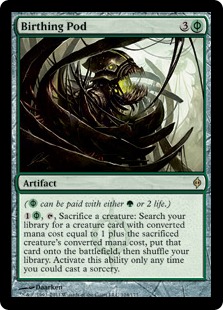 This camp subscribes to the prevailing "banning = bad" theory. They don't want to see decks/collections partially invalidated due to bannings, and place blame for said bannings at least in part on the spotlight that comes from Pro Tours. The other camp just enjoys Modern and wants to see it spread. This camp feels that Modern Pro Tours do more good than harm by bringing attention to the format and drawing in new players from Standard, and possibly even outside of Magic.
This camp subscribes to the prevailing "banning = bad" theory. They don't want to see decks/collections partially invalidated due to bannings, and place blame for said bannings at least in part on the spotlight that comes from Pro Tours. The other camp just enjoys Modern and wants to see it spread. This camp feels that Modern Pro Tours do more good than harm by bringing attention to the format and drawing in new players from Standard, and possibly even outside of Magic.
This division seems clear, but it doesn’t take into account multiple factors—the large portion of Magic players who don’t play or aren’t interested in Modern, the non-players looking at Pro Tours from an outside perspective, and the content creators, who place their feet firmly in both camps. In addition, these two arguments hold at their core a few assumptions that have yet to be proven entirely true. For one, it isn’t clear that Modern Pro Tours bring about more bannings, as there exists evidence to support both sides. In addition, it is difficult to gauge outside perspective on Modern Pro Tours, and whether they bring players to the game or push them away. This is where discussion of high-level Modern play tends to get bogged down, so I’ll do my best to clear the air.
First, the prevailing thought about bannings. Most proponents point to a few statements WoTC has made in the past that suggest an incentive to shake up "solved" Modern formats, in order to coax a more exciting viewing/playing experience for spectators and competitors. The argument here is that without Modern Pro Tours, bannings would be more infrequent, and players on the fence about buying in would feel more secure doing so with greater confidence that their deck of choice will remain legal. 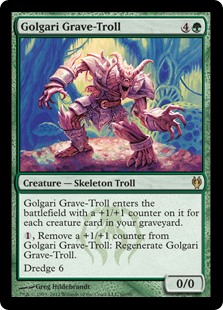 The argument against points to a seemingly continuously broken Modern format that requires bannings regardless of Pro Tour consideration. Aerial Responder and Preordain. Birthing Pod. Bloodbraid Elf. Deathrite Shaman. Dig Through Time. Splinter Twin. Summer Bloom. Eye of Ugin. Gitaxian Probe. Golgari Grave-Troll. Even with no Pro Tour last year, Modern still saw a banning as if it had one anyways, lending credence to the argument that Modern and bannings are synonymous, like peanut butter and jelly, or Lebron and diva.
The argument against points to a seemingly continuously broken Modern format that requires bannings regardless of Pro Tour consideration. Aerial Responder and Preordain. Birthing Pod. Bloodbraid Elf. Deathrite Shaman. Dig Through Time. Splinter Twin. Summer Bloom. Eye of Ugin. Gitaxian Probe. Golgari Grave-Troll. Even with no Pro Tour last year, Modern still saw a banning as if it had one anyways, lending credence to the argument that Modern and bannings are synonymous, like peanut butter and jelly, or Lebron and diva.
Second, the "bannings are bad" argument. I’ll admit that I’ve been oblivious about Standard for a while now, since shortly after Pro Tour Magic Origins to be exact. That’s a long time to be out of the loop, but my time on the outside has given me a perspective pretty unique among non-Commander content writers. Not sure I should boast about that, but there it is. My time away from Standard Magic has let me observe from the outside, and I’ve been surprised by what I’ve seen. The common belief has always been that bannings are the tremor before the earthquake, a portent of doom that will signal the end of Magic and the rise of D&D as the game of choice. Ominous whispers from the shadows tell of Affinity and the Dark Ages of 2004. Well here’s a hot take for you… I’m starting to believe that bannings aren’t that bad anymore.
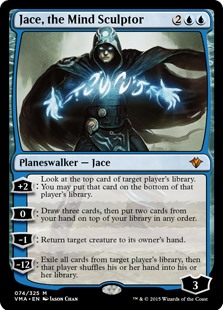 I remember when I started playing Magic, shortly after M10 was released in July 2009. It wasn’t until the beginning of 2011 that I graduated from the kitchen table (even though I was a regular contributor at FNM in my innocent youth). Nevertheless, I remember the Jace, the Mind Sculptor and Stoneforge Mystic bannings clearly, as they came right at the time when my competitiveness, experience, and income level were at odds with each other. I couldn’t afford Jaces, so I was happy to see them go. I loved Magic, so I was terrified to hear rhetoric that the game might be over. Bannings were bad, because Magic is broken, and never forget that Vault Disciple.
I remember when I started playing Magic, shortly after M10 was released in July 2009. It wasn’t until the beginning of 2011 that I graduated from the kitchen table (even though I was a regular contributor at FNM in my innocent youth). Nevertheless, I remember the Jace, the Mind Sculptor and Stoneforge Mystic bannings clearly, as they came right at the time when my competitiveness, experience, and income level were at odds with each other. I couldn’t afford Jaces, so I was happy to see them go. I loved Magic, so I was terrified to hear rhetoric that the game might be over. Bannings were bad, because Magic is broken, and never forget that Vault Disciple.
Since Modern was conceived in May of 2011, the format has experienced a major banning at least once every calendar year besides 2012 (and we saw a banning December of 2011 and January of 2013, so in my eyes 2012 got lucky). That sounds normal because we lived through it, but think about it. Before Stoneforge Mystic and Jace, the Mind Sculptor were banned in June of 2011, Magic hadn’t experienced a banning in Standard for six years. Modern hadn’t existed as a format back then, so it’s not entirely fair to compare, but think about that. For six years, no banning to a major competitive format, and then, starting with Jace and Stoneforge, at least one a year, every year. Remember when people thought Magic was in trouble in June of 2011? Ten separate Modern bannings (events, not cards) and three Standard banning events have occurred over the past six years. Magic might not be growing at Innistrad and Return to Ravnica levels, but it certainly isn’t going away. The prevailing wisdom regarding bannings in Magic is false.
Part 3: The Truth
I don’t know what’s happening with Standard right now. We’re 60% of the way through the year, and Standard has seen three bannings so far. Three. One in January, one in April, one in June. I’m playing Star Wars: Destiny a ton now, but I still see players packing in to the LGS on Friday Night, and the Pro Tour is still drawing large crowds. Most people I talk to give some variation of, “Yeah, that $*#( cray, yo,” but they are all still playing. In June of 2011, if I told you that after they banned Jace and Stoneforge, they’d make two more bannings within seven months, would you have bought WoTC stock? Doubtful.
 So, I think it’s clear that we need to come around to the facts. Bannings assuredly have some impact on Magic’s playerbase, but neither their frequency nor their size will ever be the death of the game. Players will play, because deep down we are all addicted, and while we may not welcome bannings, we shouldn’t be scared of them.
So, I think it’s clear that we need to come around to the facts. Bannings assuredly have some impact on Magic’s playerbase, but neither their frequency nor their size will ever be the death of the game. Players will play, because deep down we are all addicted, and while we may not welcome bannings, we shouldn’t be scared of them.
But, what if we did welcome bannings? Hopefully you’re still with me to this point, because it’s important that I have you convinced that bannings aren’t a harbinger of doomsday to get you to buy in to this idea. If Magic is still going strong throughout numerous bannings (13 in six years, remember) is it too alien to accept them as "part of the game?" Could bannings actually be seen as a positive, rather than a negative?
In Standard, I think the answer will always be no. A large portion of that field will always remain casual, and telling a player they cannot play is never a good thing. I’m not ten anymore, but I remember showing up to a Lord of the Rings CCG event with banned cards in my deck, not even knowing what errata meant or how to use the Internet to find information (it was 2001, before you judge). For Modern, I’m starting to come around to the idea, however. We’re all adults here, and at the end of the day, a fun, interesting format is our main goal. Bannings as a tool to shake things up, rather than a disaster to avoid at all costs, could bring us the regular shake-ups that we crave, but never receive, with set releases. The playerbase has shown that, just as they might threaten moving to Canada after a political election, players rarely quit after a banning rocks their world.
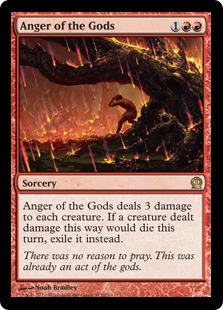 I know my bias as an online player and content creator is influencing my opinion. Monthly articles about banning speculation and the myriad of strategic consequences that could have on the format is a Magic writer’s wet dream. The risks for me are negligible; I don’t have a paper collection and I borrow my online cards for free. I’m the quintessential outsider, no skin in the game, yet I judge from the sidelines. I feel you there, hating me. I understand what I am, but my position lets me imagine a possible future, one where banning discussion in the chat of WoTC’s Twitch stream isn’t toxic, and doesn’t push new players away. It’s a utopian dream, of course, but one that, like all utopias, has a seed in reality.
I know my bias as an online player and content creator is influencing my opinion. Monthly articles about banning speculation and the myriad of strategic consequences that could have on the format is a Magic writer’s wet dream. The risks for me are negligible; I don’t have a paper collection and I borrow my online cards for free. I’m the quintessential outsider, no skin in the game, yet I judge from the sidelines. I feel you there, hating me. I understand what I am, but my position lets me imagine a possible future, one where banning discussion in the chat of WoTC’s Twitch stream isn’t toxic, and doesn’t push new players away. It’s a utopian dream, of course, but one that, like all utopias, has a seed in reality.
Wizards of the Coast has a problem on their hands, but it isn’t what you think. Three bannings in seven months for Standard is embarrassing, and they need to get their act together. Ten bannings in six years for Modern is an opportunity, one that they should fully embrace. This coming February, we will see Modern return to the stage in Bilbao, Spain. A quirky, daring gaming company has the opportunity to shock the world, and change the discourse around Magic forever. The locals might revolt, the worldwide community might snicker, but with a little courage and a lot of heart, Wizards of the Coast could change how we play, discuss, and view card gaming forever. It could just be poetic. It might just be fate.
Thanks for reading,
Trevor Holmes




Hey! Modern player and long time reader here.
This post made me register and comment just because you mentioned two games I absolutely love: SW Destiny and LotR CCg. The latter is arguably the best card game I’ve ever played.
It’s a shame you had to pick Poe Dameron, though 😀
Regarding the article, great piece. I myself don’t think anything will change before Bilbao. Modern is too wild, too wide and in constant flux to be perceived as broken by the eve of the PT.
Winston,
Thanks for the comment! Glad to see another LoTR/Destiny player in the wild, LoTR was great but SWCCG is the greatest game in the world.
Thanks for reading!
Trevor
Hi Trevor. I want start by saying that I support Modern returning to the Pro Tour. But, I mostly disagree with you here. First of all, you being a person who doesn’t have any investment into the game, it’s probably hard for you to see into the finance perspective of many players. Frequent bannings will cause Modern to become far more expensive, and it defeats the main purpose of an eternal format. Secondly, the Modern metagame is always in flux it seems, and new sets are perfect for adding a little spice but not invalidating someone’s deck choice by reshaping the meta. “Shakeup” bans are unnecessary to keep the format interesting. Fortunately Wizards has stated there won’t be any shakeup bans, so hopefully they’ll follow through. Finally, you placed Twin in your list of cards that supposedly were in obvious need of a ban. I couldn’t disagree more–Twin didn’t have too high of a metagame share and didn’t break any other ban rules, so shouldn’t have been banned in order to spice up the Pro Tour.
Graeme,
Thanks for the comment! I admitted in the article that my perspective on bannings is undoubtedly influenced by the fact that I don’t have a paper collection to worry about, but I disagree with your statement that its hard for me to see the finance perspective. I completely understand, getting your only deck banned is rough for anybody. I’m taking the unpopular stance that regular bannings/unbannings could breathe new life into the format and generate more interest than damage. This shouldn’t be done without a long-term answer to secondary market prices for Modern staples, but that is a whole other article by itself.
Twin needed a ban. Every deck had to prepare for it, and the deck pushed out other control decks like Birthing Pod pushed out other midrange decks. Playing against Twin was oppressive, as you always had to respect the potential combo whether they had it or not.
Thanks,
Trevor
There’s a lot of info on this very site that explains the motivation behind the Twin ban, but I won’t get into that.
I suppose that, having played paper Magic in the past, you do understand the finance perspective. I apologise.
If you think about the past 2 years of sets, new cards can have a huge impact on the metagame. I’m fine with that being the only way to freshen up the meta, and since I believe this is also the position of the majority of the playerbase, WotC should probably ban in a way that reflects that belief.
I feel like you should explain why “shakeups” are important or good, and why new cards are insufficient on that front if you’re taking the edgy stance that bannings are a good thing.
Chess hasnt had a shakeup ban in forever, still a pretty good game. Modern has like 5 tier one decks and a dozen tier two decks at any given time – and each individual game is still its own challenge to play out and can be entertaining to watch. New cards make a constant march into the competitive scene, and frankly its almost always better that they are subtle (courser of kruphix, kolaghans command, spell queller) than overbearing (eldrazi, collected company). Modern changing a little bit every release is fine.
Fair, maybe some elaboration would have helped. Sets are designed for Standard, it’s difficult to affect Modern too much without disrupting the acceptable power level for Standard. Bannings/unbannings can dodge this.
Chess is the greatest game in the world, so that doesn’t really apply. Wouldn’t mind banning Knights, my brother always made illegal moves.
Thanks,
Trevor
Yes most standard cards dont make it in modern. The overarching question remains: why does modern have to change? And if it does why is massive change preferable to incremental changes? I think the number of standard cards impacting modern has been too much if anything: push, eldrazi, delve, company, blessed alliance, brutality, allied fetch, eidolon, swiftspear, revelry, anger, ceremonius rejection, etc and thats not close to comprehensive nor even looking at fringe or brew tier.
Why is it too much change? I mean, there is no guarantee that the first deck you obtain will be viable, let alone tier 1, forever. It simply does not go away due to a rotation.
There is a pretty big difference between bannings to even out a broken meta (eldrazi winter for example) and to “shake things up” or to make it more interesting.
Why would I pay 2-3k for a deck that might be unusable just because?
I watch because I play. If I didn’t play I really wouldn’t watch. Wizards have miles more to do in order to make MTG something enjoyable for non players.
Like being able to follow your favourite player during tournaments and so on.
I sold my collection and play red decks. Not worth the hassle really. You are not invested in the game financialy. How come?
Dennis,
I agree that there is a big difference between ‘shake-up’ bans and ‘fix-it’ bans. My opinion is that to this point, most of the language around bans have been ‘fix-it’, talk, where with a slight pivot WoTC could change the narrative entirely. Get us to expect bans, and they change the discussion and the perception around them.
I understand the finance point. I really do. I don’t think they can move to a regular banning schedule without doing something to bring down the cost of entry for Modern. They’ve shown with Modern Masters and Masterpieces and the like that a desire exists to get more cards into the community, but more needs to be done. This is an extremely complicated issue with tons of points and counterpoints, and 2000 words only gives me enough to introduce the concept.
I sold out of the game shortly after I Day Two’d Pro Tour Magic Origins. I still love the game and play and write constantly (obviously), but I had other goals in mind and couldn’t justify the cost of owning a collection when I rarely had time to take a Friday to play with them.
Thanks,
Trevor
I have never seen a 3K modern deck, barring all foils or something like that. In fact, 1K now really covers the high-end as 3 color midrange goodstuffs decks like jund have been supplanted by grixis shadow and eldrazi tron, both of which fall a hair under $1,000.
Hi trevor i’m from Bilbao and i’m quite excited with this modern pro tour. One quick note, Bilbao may be the city number ten in population but the sorrounding area goes up to one million of inhabitants so it’s importance is quite the same as seville and valencia. Speaking now about magic i think a modern pro tour can only be positive for the format because it’s the best way to show modern to casual viewers. One of the fears that modern players have is the lack of high stage tournaments having as a consecuence the decline of the format and the retun of modern pro tours recovers the confiance of the players on wotc. I agree with you about the banns. They are a part of the game, but if you have paper collection can be quite harmful. Despite that i think the pros of having a modern pro tour outweight the cons.
Jon,
That’s awesome! I hope you didn’t take offense, for those of us in America that aren’t familiar with architecture, Bilbao isn’t as well-known as some other cities in Spain, which I think is a shame. I’m curious to hear firsthand about your opinion on tourism to your city, are you annoyed with it like New Yorkers are with Times Square? I’ve read that most locals are torn about the Guggenheim, they recognize the effect it has had but wish people would just go away.
The tourism in bilbao is not nearly as annoying as in other cities such as Barcelona or Seville. In fact its quite rare to see big groups of tourists. I have to say that i dont live in the downtown so maybe other people have different experiences. Bilbao is a wonderfull city and it has lots of things to visit apart from the guggenheim.
Hello, I am other Spanish, from a city near to Bilbao. I think that “Bilbao probably wouldn’t even exist today, if not for one event: the design and construction of the Guggenheim Museum, by Frank Gehry.” is pretty exaggerated…an aproppiate idea for an architecture student but not very real. The economy in Bilbao is strong, the Guggenheim is part of a bigger Project for revitalizating a depressed zone of the city with great posibilities. In my opinion is pretty ugly but it works.
About the tourism in Bilbao, is fine, the local people are happy with the cultural tourism.
Hey Trev.
I feel like (looking at the comments) a lot of us lost sight of the big picture:
MODERN PRO TOUR IS BACK! Wooo! 😀
I’m stoked. I’m going to be grinding PPTQs for the next two months at a shot at RPTQ Berkeley, CA. I thought I was confined to Grand Prix for the rest of my life 😛 I don’t care if there are a dozen pro tours per year and only one or two of them are Modern format. The fact that they brought it back is awesome. Cheers.